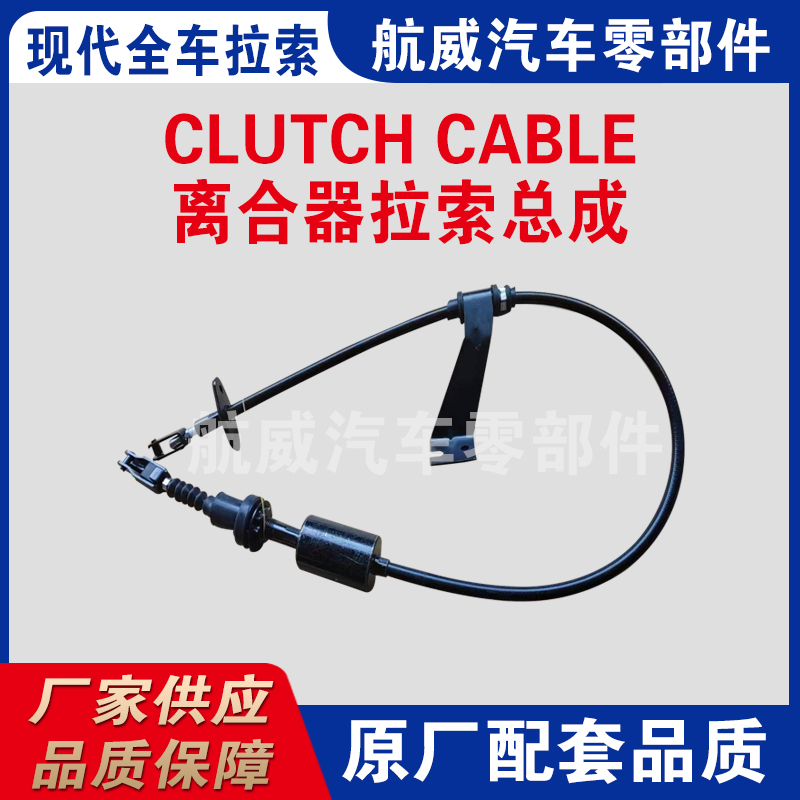Understanding EFI Throttle Cable Functionality and Its Impact on Engine Performance and Response
Understanding EFI Throttle Cables
Electronic Fuel Injection (EFI) systems have revolutionized the way internal combustion engines operate, enhancing efficiency, performance, and emissions control. A critical component of these advanced systems is the throttle cable, which plays a vital role in managing the engine's air intake and, consequently, its performance. In this article, we will delve into the function of EFI throttle cables, their significance, and considerations for maintenance and replacement.
Function of the EFI Throttle Cable
In traditional mechanical fuel injection systems, the throttle cable connects the accelerator pedal to the throttle body directly, allowing for a straightforward mechanical link. However, EFI systems often employ a more complex interaction between the accelerator pedal and the engine's throttle. In modern EFI setups, the throttle cable may still exist in certain vehicle models, but increasingly, vehicles use electronic throttle control (ETC) systems. Nonetheless, understanding the throttle cable's traditional role is essential for grasping how these systems work.
The throttle cable's primary function is to translate the driver's intentions (accelerating or decelerating) into actionable inputs for the throttle body. The throttle body is crucial as it controls the amount of air entering the engine. When the accelerator pedal is pressed, the throttle cable pulls the throttle plate open, allowing more air to mix with fuel. This increase in airflow is essential for higher engine power output.
Importance of Throttle Cables in EFI Systems
The significance of throttle cables, or their electronic counterparts, cannot be understated. They ensure the engine receives the correct air-to-fuel ratio, which is crucial for optimal combustion. A well-functioning throttle system contributes to better fuel efficiency, improved power delivery, and reduced emissions, making it a cornerstone of modern automotive engineering.
efi throttle cable

Furthermore, the responsiveness of a vehicle directly relates to the integrity of the throttle system. A malfunctioning throttle cable can lead to various issues, including delayed throttle response, erratic engine behavior, and even safety hazards. For this reason, regular maintenance and inspection of throttle cables and their associated components are crucial.
Maintenance and Replacement Considerations
Maintaining throttle cables involves ensuring they are properly lubricated and free from wear. Over time, cables can fray, become kinked, or suffer from corrosion, which significantly affects performance. Drivers should be vigilant for signs of a failing throttle cable, which may include sticking acceleration, irregular engine speeds, or the vehicle not responding as expected.
In the event of failure, replacing the throttle cable should not be delayed. A malfunctioning throttle can lead to dangerous driving conditions, including unintended acceleration. Replacement typically requires some technical knowledge, as the cable must be correctly adjusted to ensure optimal performance.
For those relying on the electronic throttle control (ETC) systems, it is essential to understand that these systems rely on sensors and electronic signals rather than a physical cable. If issues arise within an ETC system, they may require diagnostics through a professional mechanic, as electronic components can be more complex to troubleshoot and repair than their mechanical counterparts.
Conclusion
EFI throttle cables, whether mechanical or electronic, are indispensable for ensuring that vehicles perform efficiently and safely. Understanding their function, importance, and maintenance can empower vehicle owners to take better care of their engines. By prioritizing the health of the throttle system, drivers can enjoy a smoother, more reliable driving experience while also contributing to improved fuel efficiency and reduced emissions. Regular inspection and timely replacement of throttle cables can significantly extend the life and performance of any vehicle, making it a worthwhile investment in vehicular health.
-
Upgrade Your Control with Premium Throttle CablesNewsAug.08,2025
-
Stay in Control with Premium Hand Brake CablesNewsAug.08,2025
-
Experience Unmatched Performance with Our Clutch HosesNewsAug.08,2025
-
Ensure Safety and Reliability with Premium Handbrake CablesNewsAug.08,2025
-
Enhance Your Vehicle with High-Performance Clutch LinesNewsAug.08,2025
-
Elevate Your Ride with Premium Gear CablesNewsAug.08,2025
